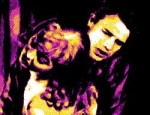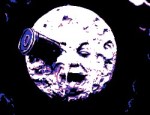Film Review

Perfectly attuned to the eerie romanticism of the piece is a 23-year-old Gérard Philipe, quietly imposing in his first major screen role (prior to this he had bit parts in two films by Marc and Yves Allégret). Making a jarring contrast with Philipe's innocence and gauche charm is a truly nasty Pierre Brasseur, who when he is not causing trouble and trying to work his way into bed with Jany Holt, is seen casually slinging cats around the set. Brasseur would become renowned for his villainous portrayals in later years but here he is at his most seductively vile, charming and loathsome in equal measure. Jany Holt completes this remarkable trio of talent, and is a model of enigmatic charm, a curious mix of classic femme fatale and fairytale heroine. Louis Page's cinematography contributes much to the mystical allure of the film, seamlessly blending together the parallel story strands in a way that makes the tragic ending inevitable. The poor quality of the exterior sets betrays the budgetary limitations somewhat, but other than this there is not much to fault with this strange and beguiling film.
© James Travers 2015
The above content is owned by frenchfilms.org and must not be copied.
Film Synopsis
After an accident in which he suffers a head injury, Simon Legouge, a modest notary's clerk, begins to experience a series of strange visions. Seeing that Simon needs a change of air, his employer sends him to Spain to deal with an inheritance matter. During the train journey, Simon seems to recognise the unfamiliar countryside. Even more bizarrely, when he arrives at his destination, a village named Tournepique, he feels he knows the people he meets there. Haunted by a growing sense of dejà-vu, Simon begins to investigate an unsolved crime that was committed a hundred years before...© James Travers
The above content is owned by frenchfilms.org and must not be copied.
Similar Films
Here are some other films you may enjoy watching:- Toni (1935)
- Lac aux dames (1934)
- Wild River (1960)
- The Snows of Kilimanjaro (1952)
- Entrée des artistes (1938)
Other related links:
Film Credits
- Director: Georges Lacombe
- Script: Georges Lacombe, Pierre Véry
- Cinematographer: Louis Page
- Music: Marcel Mirouze
- Cast: Jany Holt (Catherine Le Quellec), Pierre Brasseur (Jean-Thomas Pellerin), Gérard Philipe (Simon Legouge), Marthe Mellot (Anaïs Talacayud), Jane Marken (La secrétaire), Guy Favières (Le père d'Aurélia), Hélène Tossy (Bérengère), Edmond Castel (Le cousin), Paul Demange (Le clerc de notaire), Léon Berton (Le notaire de 1838), Sylvie (Mme Le Quellec), Auguste Bovério (Le juge de paix), André Chanu (Le second clerc), Luce Fabiole (La gouvernante), Paul Faivre (Le paysan), Julienne Paroli (La grand-mère), Jane Pierson (Une amie d'Anaïs), Lucien Daubrel, Denise Bonal, Henri Niel
- Country: France
- Language: French
- Support: Black and White
- Runtime: 100 min
- Aka: Land Without Stars
The best of American cinema

The history of French cinema

The Carry On films, from the heyday of British film comedy
